V-22 Osprey, who are you for, old man?
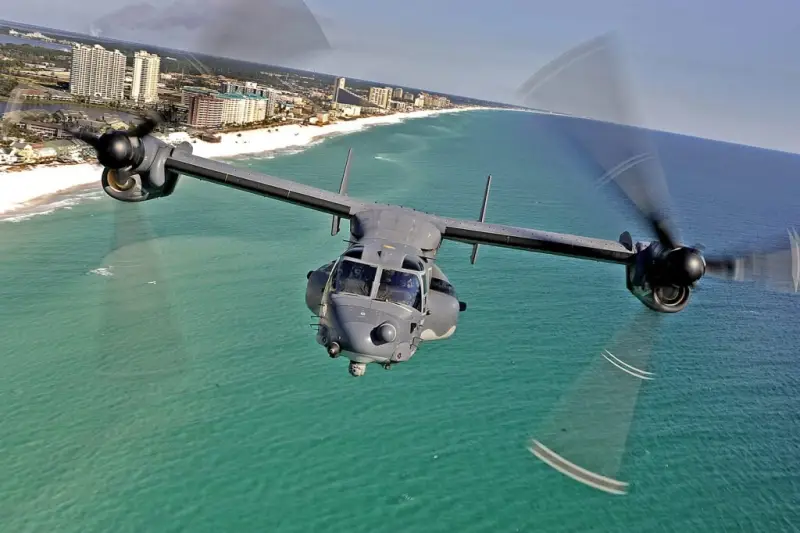
The crash of a U.S. Air Force CV-22B Osprey last month was the latest in a string of fatal accidents that prompted the Air Force and Marine Corps to ground their tiltrotor aircraft.
Justified, because plane crashes between March 2022 and November 2023 killed 20 US military personnel. The Osprey's crash rate is higher than its U.S. Army equivalent, the UH-60 Black Hawk, but several of the Osprey's advantages make it the only aircraft suitable for certain missions.
It so happens that the aircraft, which had seemingly lost its reputation as a deadly aircraft, is again the subject of controversy after another crash in late November, the fourth fatal incident in less than two years.

The V-22 Osprey, in service with the Marine Corps and Air Force Special Operations Command, is one of the most capable VTOL aircraft in the world. But this capability comes at a cost: The aircraft has more than three times the crash rate of its less powerful counterpart, the Army's UH-60 "Blackhawk."
Following the latest accident on Nov. 29 off the coast of Kagoshima in southern Japan, which killed all eight crew members, the Air Force and Navy have suspended the use of their V-22s, Air Force Special Operations Command (AFSOC) said in a Dec. 6 statement.
December 7 Naval Command aviation Systems issued its own statement saying it would suspend all variants of the V-22 Osprey "out of an abundance of caution."
Flew off.
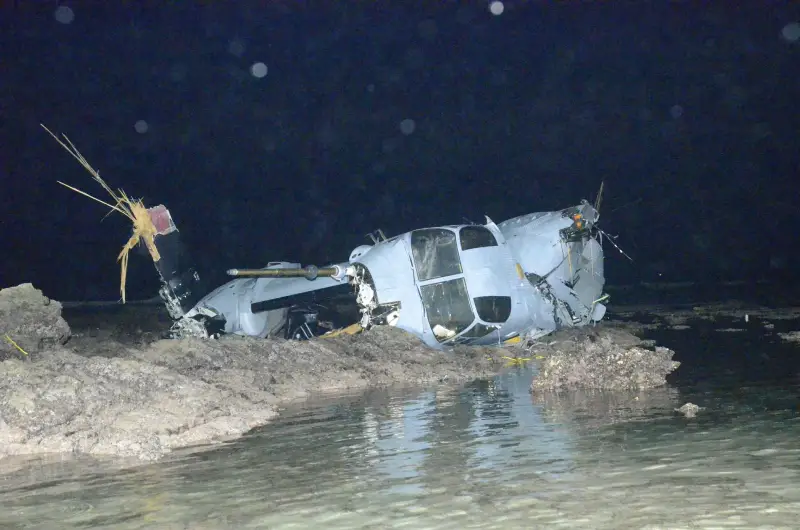
Eight of the dead crew members were U.S. Air Force pilots assigned to the 353rd Special Operations Wing based at Yokota Air Base. The Air Force described the flight as a "routine training mission." According to AFSOC, the preliminary investigation indicates that "a potential material failure caused the accident, but the underlying cause of the failure is currently unknown."
Let's just say that everything is very, very contradictory.
But we must also agree that the V-22 “Osprey” itself is a rather controversial device, starting from the design and ending with the implementation of all ideas. More created in spite of than by the will of time. And as for the latter, almost two decades on the road from the start of work to adoption - that’s a lot.
In general, yes, one among strangers, a stranger among one’s own. A little stories? It will be useful.
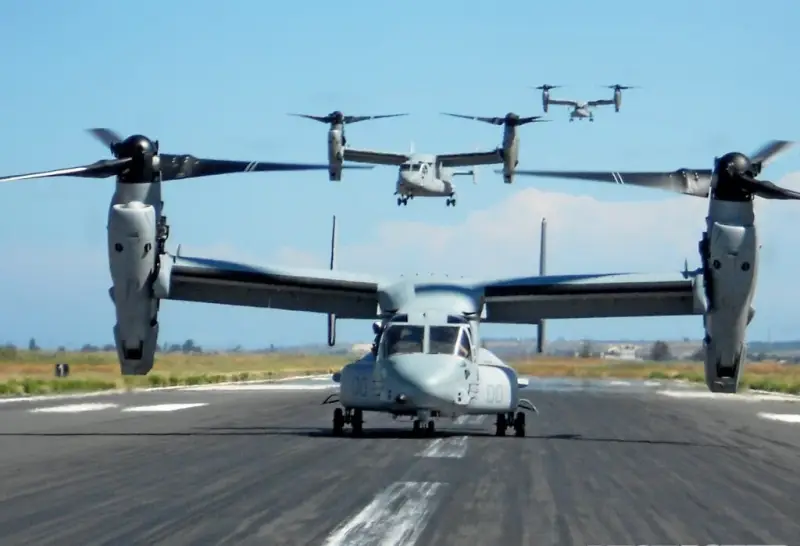
The V-22 Osprey was introduced in 1989 as the world's first operational tiltrotor aircraft. It spent 18 years in development, debugging and testing, and finally entered service with the US Marine Corps in 2007. The MV-22 has replaced the veteran Vietnam-era CH-46 "Sea Knight" as the Marine Corps' medium transport aircraft, and there are currently about 298 aircraft in service out of a planned fleet of 360 vehicles. The Air Force operates 52 CV-22B Ospreys as a long-range transport for special operations, while the US Navy planned to acquire 48 CMV-22Bs as an airborne carrier aircraft carrying cargo between land and sea-based services. aircraft carriers.
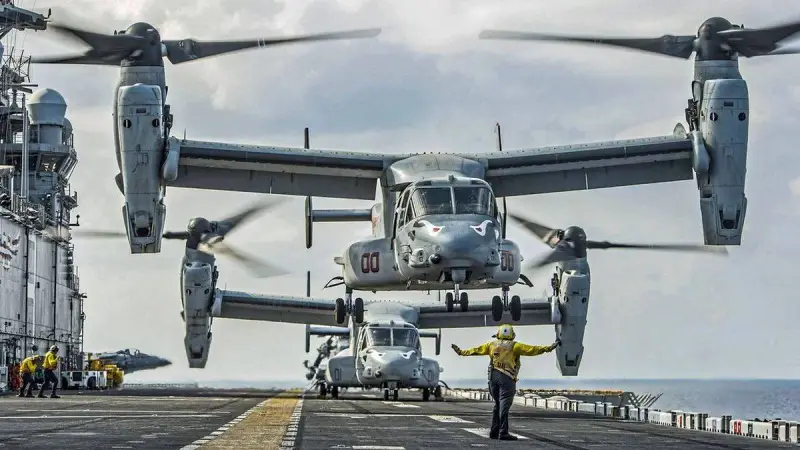
In principle, the CV-22B “Osprey” was fully consistent with the tasks assigned to it. In April 2011, six tiltrotor aircraft from the 226th Squadron, 26th Marine Expeditionary Unit, flew from the British military base Camp Bastion in Afghanistan to the amphibious assault ship USS Kearsarge at Souda Bay on the island of Crete. The flight distance was 4500 km, taking into account the flight over unfriendly territories. During the flight, two refuelings were made from KC-130J Super Hercules refueling aircraft. So long distances were not such a problem for tiltrotors.
The Osprey's development period was marked by several high-profile accidents, three of which occurred between 1992 and 2000, and a total of 30 people were killed in these accidents. This led to the aircraft being nicknamed the "Widowmaker" and the CV-22B "Osprey" was heavily criticized for both safety and cost reasons.
The tiltrotor seemed to have been finalized, and at the end it had a fairly good level of safety for the 2010s, and until 2017 there were only seven major incidents in which only 8 people died. But after 2017 it exploded. There has been a surge in fatal accidents.
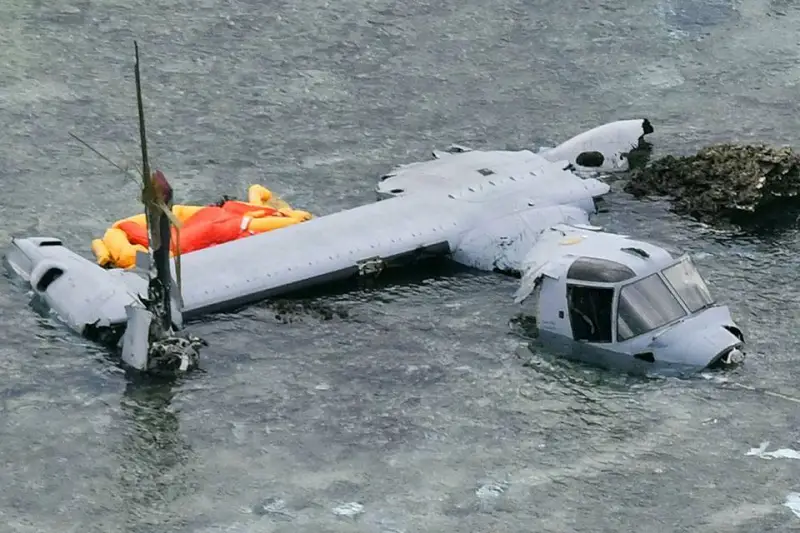
During 2017 alone, there were three landing accidents (Syria, Yemen, Australia), resulting in the death of 4 people.
Four Marines died in Norway in March 2022 in a crash caused by pilot error.
Five crew members died in June 2022 in Southern California due to a malfunction of the aircraft's hydraulic system.
Three died in a crash in Australia in August 2023 in a crash that is still under investigation.
According to the Marine Corps in July 2022, the Osprey Class A accident rate was 3,61 per 100 flight hours. This was before the last two accidents in Australia and Japan.
The Pentagon records Class A accidents as "direct casualties totaling $2 or more, an accident resulting in death or permanent total disability, or the destruction of a Department of Defense aircraft." That is, you have to try hard to enter this accident class.
By comparison, the 2021 UH-60 Black Hawk Class A accident rate in U.S. Army service was 0,87. However, this comparison is somewhat unfair, since the Osprey costs $84 million and the Black Hawk costs $19 million.
In fact, more expensive aircraft tend to have more damage, and an accident that is a Class A for an Osprey could easily be a Class B (less than $2,5 million, including permanent disability or three injuries) ) or even a Class C (less than $600 in damage) for the Black Hawk. However, the fact that the Class A accident rate is almost four times higher than that of the UH-000 is certainly suggestive.
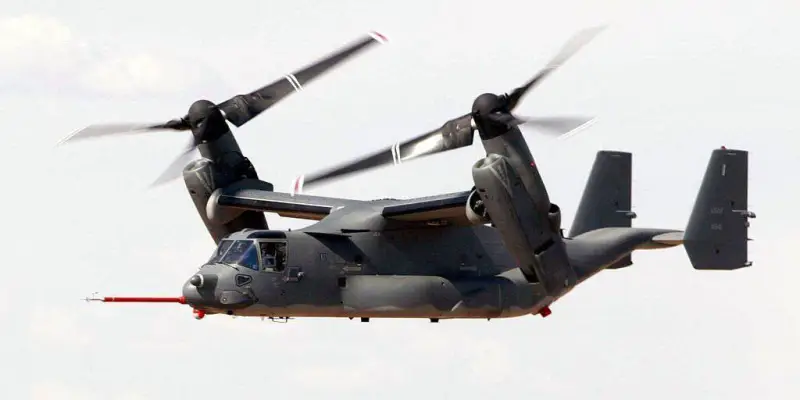
Yes, of course, a tiltrotor has significant advantages over both an airplane and a helicopter. This cannot be taken away from the CV-22B Osprey, and no one is going to.
The helicopter was the dominant type of VTOL aircraft from the post-World War II era until the US Marine Corps agreed to purchase the MV-22 Osprey tiltrotor in 1989. The tiltrotor design, which includes two turboshaft engines driving two large rotors, allows the plane to take off vertically like a helicopter and then turn the rotors 90 degrees to fly like a regular airplane. The Osprey was the first operational aircraft that could fly in both modes in a single flight.
The tiltrotor capabilities were intended to give the Osprey the best of both worlds, airplane and helicopter. The aircraft could take off and land from landing ships or improvised landing pads on land, fly normally at a cruising speed of 500 km/h, significantly faster than any helicopter, and fly farther than any helicopter in the world.
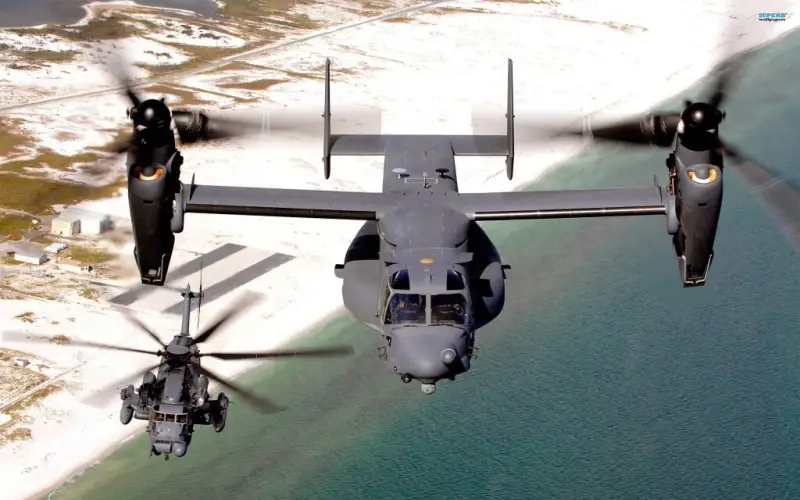
It is clear that in this regard, the CV-22B Osprey is head and shoulders above any helicopter in missions where speed, stealth and range are needed, and an aircraft in landings in unsuitable places. In general, this device is a valuable find for various MTRs, which has been proven in practice more than once.
So what to do and what to do with this very controversial machine?
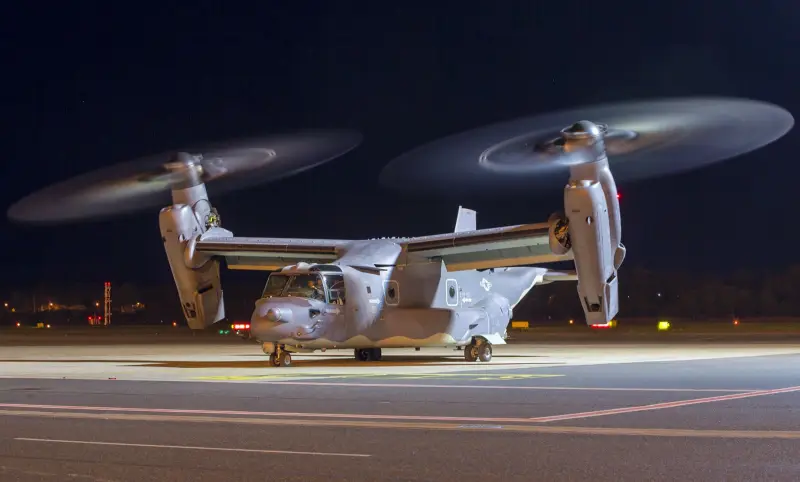
To begin with, of course, it is worth examining all the accidents that have occurred recently. Naturally, some of the accidents will one way or another be on the conscience of the pilots of this not-so-easy-to-control machine, and some will be on the conscience of the technical part.
If the issue is the training of flight and technical personnel, this, of course, can be solved, but not so quickly. It's no secret that today the technical services of the army and fleet The United States is going through difficult times in terms of personnel. In general, serving is not as prestigious as it used to be; in principle, the “successes” in the personnel policy of the US Armed Forces after Afghanistan can be equated to post-Vietnam times. That is, if smart people go into the service, then yes, in the “bespectacled” services like DARPA, where they can make a generally good career “without getting dirty.”
The level of technical personnel could indeed decline over time and this was reflected in the operation of such complex machines as the CV-22B Osprey. But this is a matter of checks, which take time.
The November Osprey accident, which once again resulted in fatalities, is just the latest in a string of four accidents in less than two years. While one crash was declared pilot error, at least one other had a mechanical cause. So in terms of the future fate of Osprey, there may be different developments. Of course, this device could provide more capabilities to US special operations forces, but it could also be more dangerous than another country's anti-aircraft missile systems.
It is worth noting that in operations in Syria since 2014, the United States has lost one CV-22B Osprey, while exactly ten times as many vehicles were lost in normal operation and in non-combat conditions.

But since 2007, the developers have done a huge amount of work to modernize the machine and eliminate defects found, which, the Americans themselves admit, were more than enough. But not because of the crooked designers. The car was truly so revolutionary that the designers had to face problems that they did not even suspect.
For example, that an aircraft with the capabilities of a helicopter will exhibit such a helicopter disease as the “vortex ring” effect. It was observed in vehicles that were landing at a low horizontal speed, but with a significant vertical speed. During such a landing, the main rotor blades fell into the vortex flow created earlier, causing the lifting force to drop and the machine to “sag,” which often ended with the machine falling altogether.
For the Osprey, which can't land like an airplane, this was quite a problem. Moreover, if a car like the Osprey gets one engine into the vortex ring, the car will completely capsize.
Yes, the Osprey is a very controversial car, which even today causes a huge amount of controversy and criticism. However, one cannot deny the fact that the developers managed to bring to life the concept that was laid down at the start of the program. They made an aircraft that can take off vertically and cover significant distances at the speed of a regular airplane. This is on one side of the scale.
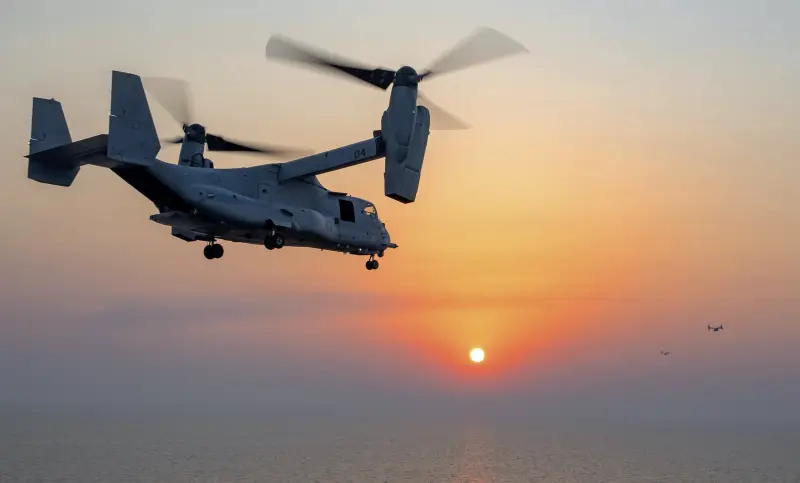
On the other hand, there are almost three decades of work by design bureaus of several companies, thousands of man-hours (probably millions), billions of dollars spent and, as a result, to date 63 dead crew members and troops.
This is a bit much. And they think so even where they will soon decide the difficult fate of this difficult apparatus.
Information